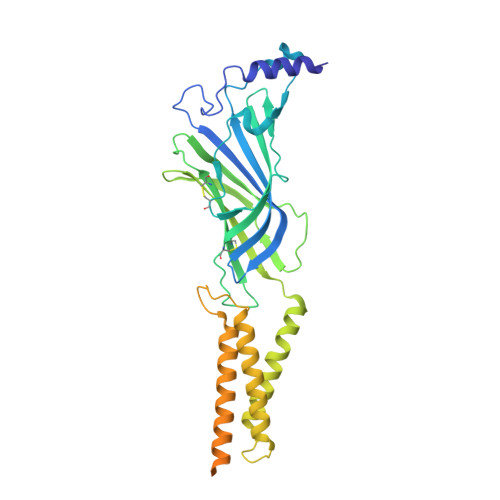Structural basis of sensory receptor evolution in octopus.
Allard, C.A.H., Kang, G., Kim, J.J., Valencia-Montoya, W.A., Hibbs, R.E., Bellono, N.W.(2023) Nature 616: 373-377
- PubMed: 37045920
- DOI: https://doi.org/10.1038/s41586-023-05822-1
- Primary Citation of Related Structures:
8EIS - PubMed Abstract:
Chemotactile receptors (CRs) are a cephalopod-specific innovation that allow octopuses to explore the seafloor via 'taste by touch' 1 . CRs diverged from nicotinic acetylcholine receptors to mediate contact-dependent chemosensation of insoluble molecules that do not readily diffuse in marine environments. Here we exploit octopus CRs to probe the structural basis of sensory receptor evolution. We present the cryo-electron microscopy structure of an octopus CR and compare it with nicotinic receptors to determine features that enable environmental sensation versus neurotransmission. Evolutionary, structural and biophysical analyses show that the channel architecture involved in cation permeation and signal transduction is conserved. By contrast, the orthosteric ligand-binding site is subject to diversifying selection, thereby mediating the detection of new molecules. Serendipitous findings in the cryo-electron microscopy structure reveal that the octopus CR ligand-binding pocket is exceptionally hydrophobic, enabling sensation of greasy compounds versus the small polar molecules detected by canonical neurotransmitter receptors. These discoveries provide a structural framework for understanding connections between evolutionary adaptations at the atomic level and the emergence of new organismal behaviour.
- Department of Molecular and Cellular Biology, Harvard University, Cambridge, MA, USA.
Organizational Affiliation:


















